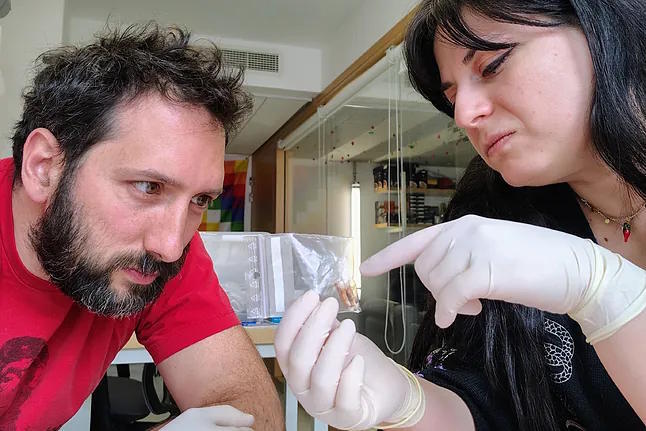Leprosy already existed in the American continent before the arrival of European colonizers. This is demonstrated by a new research published this Thursday in Science that "undoubtedly changes the historical narrative about the disease in America," as emphasized by Nicolás Rascovan, a researcher at the Pasteur Institute in Paris and one of the main authors of the study.
"Until now, it was thought that in the American continent, this disease was exclusively due to the species introduced by European colonizers, the bacterium Mycobacterium leprae, historically associated with this infectious disease and the main cause of the disorder in the world today," explains Rascovan, head of the Microbial Paleogenomics Unit at the French institution. However, their study shows that "Mycobacterium lepromatosis, a second species also causing leprosy and discovered in 2008, was already present in indigenous populations of America long before European contact," adds the researcher.
Leprosy, or Hansen's disease, is an infectious disease caused by bacteria that mainly affects the skin, peripheral nerves, and sometimes the upper respiratory tract. Although the transmission mechanism is not fully understood, it is believed to be person-to-person through inhalation of infectious particles after close and prolonged contact. Most people who come into contact with the bacteria do not develop the disease.
Rascovan and Maria Lopopolo, from the Pasteur Institute, and Charlotte Avanzi, from the University of Colorado (USA), led this new work involving over 40 scientists from different institutions. In total, the researchers analyzed about 800 samples, including ancient human remains and current clinical cases. The project was carried out in collaboration with indigenous communities, "who participated in decisions regarding the use of ancestral remains and the interpretation of results," the researchers highlight.
The analysis identified three ancient individuals -two in what is now Argentina and one in Canada- who showed evidence of M. lepromatosis infection approximately 1,000 years ago. Despite the geographical distances, the strains showed significant similarities and had infected their hosts in close time periods, "suggesting that the bacteria had spread widely across the continent in just a few centuries."
This finding indicates that "leprosy was an endemic disease and spread throughout the continent for at least 1,000 years," Rascovan points out.
The researchers also identified different lineages, diversified over the last 10,000 years. One of them, emerged about 9,000 years ago, still infects people in North America.
How were the samples analyzed?
To carry out the work, the researchers used ancient DNA analysis techniques. "We extract DNA from human archaeological remains, in this case, teeth, and analyze it using high-throughput sequencing," explains Rascovan.
"What we obtain is a mixture of the individual's DNA, soil microorganisms where the person was buried, and sometimes also the pathogen infecting that person at the time of their death, if they had any infection when they died," he clarifies. With this data, scientists then compare these sequences with reference databases, searching for DNA fragments matching known bacterial genomes. This tracing allowed them to detect "small sequences of M. lepromatosis in ancient individuals."
After confirming it "with sensitive and rigorous bioinformatic methods," the team even managed to reconstruct complete genomes of the pathogen. "This allowed us to place the strains within the evolutionary tree of the bacteria and estimate how long they had been circulating on the continent and their diversity," Rascovan points out.
The work also established a connection with M. lepromatosis infections in red squirrels in Ireland and the UK. Until now, it was unknown how the bacteria had reached these animals, but the new research suggests that the infections are likely caused by strains introduced from America.
"The work contributes to a broader discussion on which diseases existed in America before contact with Europe, something that is still not well understood."
What are the clues in the discovery?
Now that the team has been able to unravel the long and complex evolutionary history of M. lepromatosis in America, "the next step is to try to fill in the gaps," says Rascovan.
"We want to know if there are other undetected lineages, where they are hiding, and if there are animal reservoirs maintaining the bacteria and facilitating its transmission to humans," he points out. To achieve this, "it is crucial to continue expanding sampling, both of ancient remains and current clinical cases, especially in understudied regions of America and Asia." Additionally, the researcher concludes, "it is also essential to improve surveillance of this bacteria, which has been poorly monitored so far, to understand its infection dynamics and potential impact on public health."
The scientist emphasizes the importance of bringing scientific work closer to society and highlights the participation of indigenous communities, "both in North America and South America, who were asked for consent to conduct the study, kept informed throughout the project, and were updated on the progress," etc.
